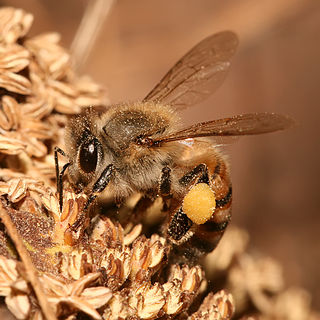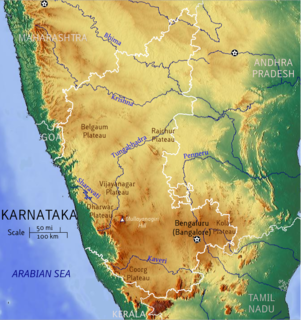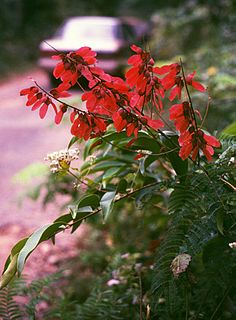| Pterolobium hexapetalum | |
|---|---|
 | |
| The Camp Siege (P. hexapetalum) in India | |
| Scientific classification | |
| Kingdom: | Plantae |
| (unranked): | Angiosperms |
| (unranked): | Eudicots |
| (unranked): | Rosids |
| Order: | Fabales |
| Family: | Fabaceae |
| Subfamily: | Caesalpinioideae |
| Genus: | Pterolobium |
| Species: | P. hexapetalum |
| Binomial name | |
| Pterolobium hexapetalum (Roth) Santapau & Wagh | |
| Synonyms | |
The Indian Redwing, Camp Siege or Bhoca [1] (Pterolobium hexapetalum) is a flowering plant in the legume family, Fabaceae. It is found from Burma, Bhutan and Bangladesh to southern India, where it occurs up to 1200 m altitude. They are large scrambling or climbing shrubs that grow commonly in dry deciduous forest, or as pioneer plants in open land.

The flowering plants, also known as angiosperms, Angiospermae or Magnoliophyta, are the most diverse group of land plants, with 64 orders, 416 families, approximately 13,164 known genera and c. 369,000 known species. Like gymnosperms, angiosperms are seed-producing plants. However, they are distinguished from gymnosperms by characteristics including flowers, endosperm within the seeds, and the production of fruits that contain the seeds. Etymologically, angiosperm means a plant that produces seeds within an enclosure; in other words, a fruiting plant. The term comes from the Greek words angeion and sperma ("seed").
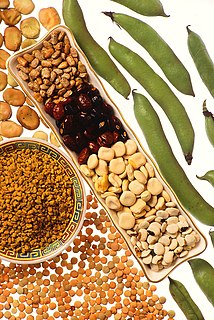
A legume is a plant in the family Fabaceae, or the fruit or seed of such a plant. Legumes are grown agriculturally, primarily for human consumption, for livestock forage and silage, and as soil-enhancing green manure. Well-known legumes include alfalfa, clover, peas, chickpeas, lentils, lupin bean, mesquite, carob, soybeans, peanuts and tamarind. Legumes produce a botanically unique type of fruit – a simple dry fruit that develops from a simple carpel and usually dehisces on two sides. A common name for this type of fruit is a pod, although the term "pod" is also applied to a number of other fruit types, such as that of vanilla and of the radish.

The Fabaceae or Leguminosae, commonly known as the legume, pea, or bean family, are a large and economically important family of flowering plants. It includes trees, shrubs, and perennial or annual herbaceous plants, which are easily recognized by their fruit (legume) and their compound, stipulate leaves. Many legumes have characteristic flowers and fruits. The family is widely distributed, and is the third-largest land plant family in terms of number of species, behind only the Orchidaceae and Asteraceae, with about 751 genera and about 19,000 known species. The five largest of the genera are Astragalus, Acacia, Indigofera, Crotalaria, and Mimosa, which constitute about a quarter of all legume species. The ca. 19,000 known legume species amount to about 7% of flowering plant species. Fabaceae is the most common family found in tropical rainforests and in dry forests in the Americas and Africa.
They carry pairs of thorns below the rachis of their bipinnate leaves, and their sprawling twigs are armed with recurved thorns. In springtime their profuse and attractive inflorescences of pinkish white flowers form a mat on tree canopies. Starting March to April, they present a major source of nectar and pollen, and are foraged on by different species of honey bee. In late summer they bear colourful samaroid fruit, containing one seed each. The young shoots are useful as cattle fodder.

In biology, a rachis is a main axis or "shaft".
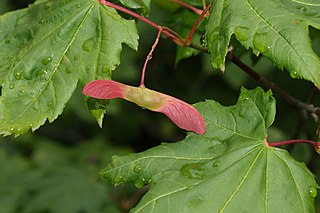
A samara is a winged achene, a type of fruit in which a flattened wing of fibrous, papery tissue develops from the ovary wall. A samara is a simple dry fruit and indehiscent. The shape of a samara enables the wind to carry the seed farther away than regular seeds from the parent tree, and is thus a form of anemochory.


